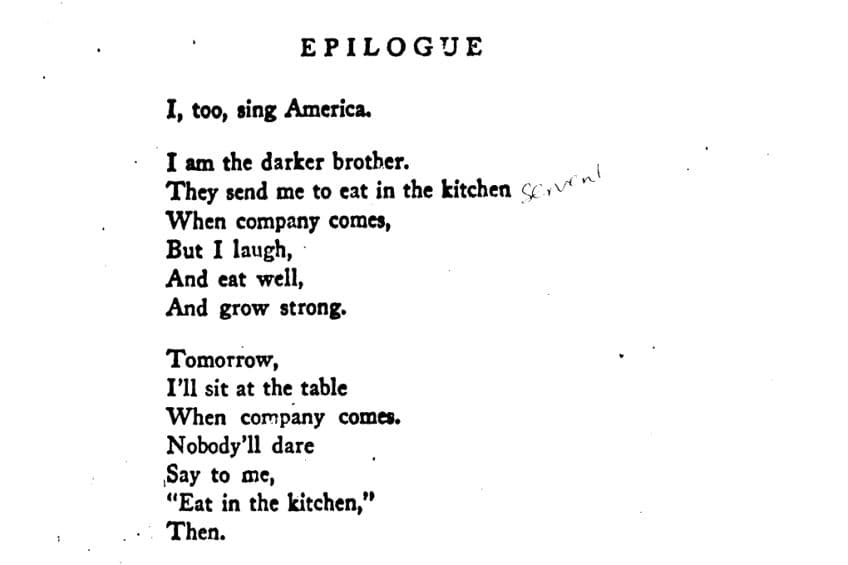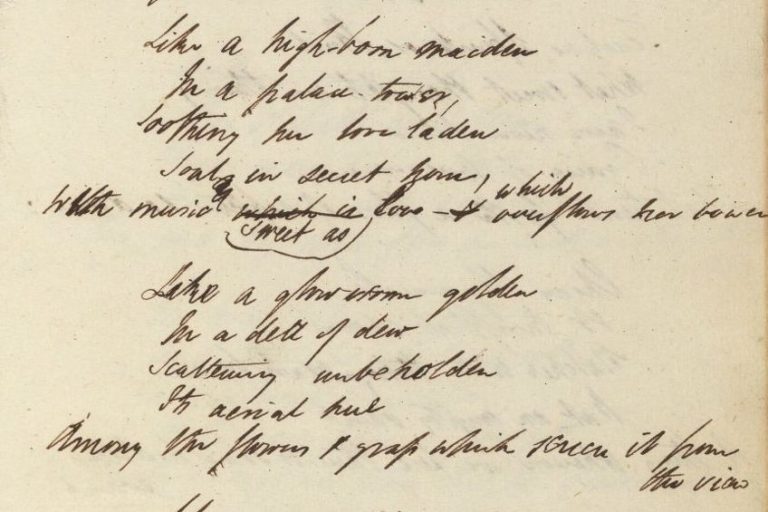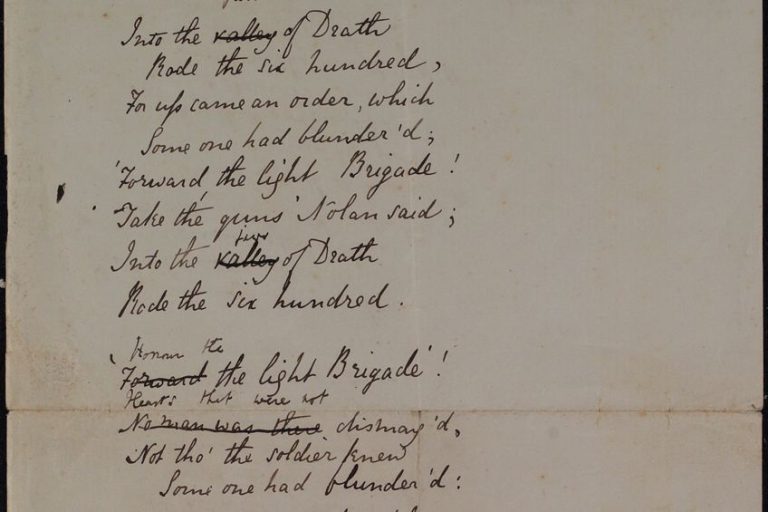What Is Enjambment in Poetry? – Creating Flow in Your Writing
What is enjambment in poetry? What is an enjambment in general? What is an enjambment poem? There are many different reasons why enjambment may be used in poetry, and that is what we will focus on in this article today. We will discuss enjambment as a concept, why and how it is used, the effects that it produces, how you would read a poem that uses enjambment, and, lastly, we will take a look at a few enjambment examples in prominent poems. So, if you have asked the question, “What is enjambment in poetry?”, look no further, and let’s get going!
What Is Enjambment in Poetry?
Enjambment is a poetic device that alters the flow of a poem. When we think of poems, for the most part, we think of each line being read on its own. There is a slight pause after each line before proceeding to the next line. Well, that is not always the correct way to read poetry even if it does feel more natural. Enjambment is one of the reasons that this is not the correct way to read a poem.
Enjambment in poetry entails the flowing of one line’s idea into the next. This means that a line in a poem may start an idea but does not finish it or make use of any kind of punctuation to indicate a pause or something similar. For this reason, you instead read it as if it was continuous writing, like a sentence. Let’s look at a more traditional example of a poem line, and these examples will be completely made up:
We are discussing poems and stuff.
This really isn’t a bluff.
Even if this poem is nothing but fluff.
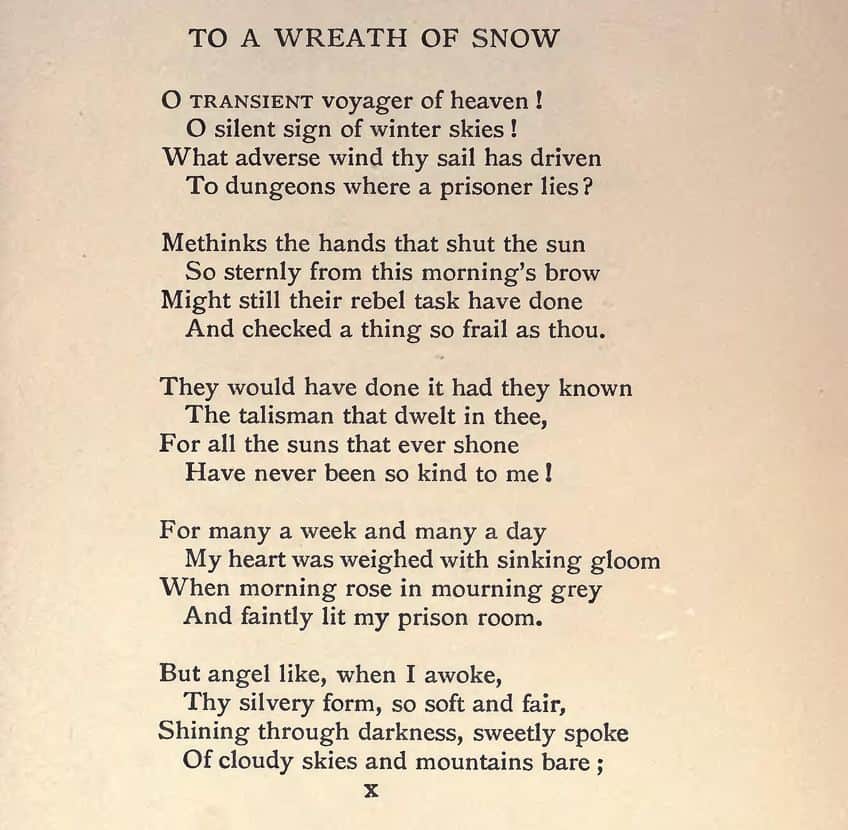
There are even a few rhymes in there for the fun of it. However, as you can see, you read each line individually. They are all entirely separate from one another. There are even full stops to indicate that you can take a little breath between them. But what if it was written like this instead:
We are discussing poems and stuff
and no, this really isn’t a bluff
even if this poem is nothing but fluff.
As you can see, the presentation becomes different. There are no full stops at the end of each line and so they simply flow into one another. This can be read as if it was a single sentence. This means that it reads more like prose than it does like more traditional poetry.
So, in very simple terms, this is enjambment in poetry. It allows an idea to flow into the next line without requiring any kind of a break.
Understanding the Use of Enjambment
Why is enjambment used? We already know what it is, but why would anyone write something in this kind of a style? Well, the reason for it is actually quite simple. It is a poetic device, like every other kind of poetic device, and for that reason, it either can or cannot be used. For instance, not every poem uses rhyme and we all generally acknowledge that poems do not require rhyme (even if there tends to be a default belief that poetry equals rhyme). Rhyme, much like enjambment, is simply a poetic device.
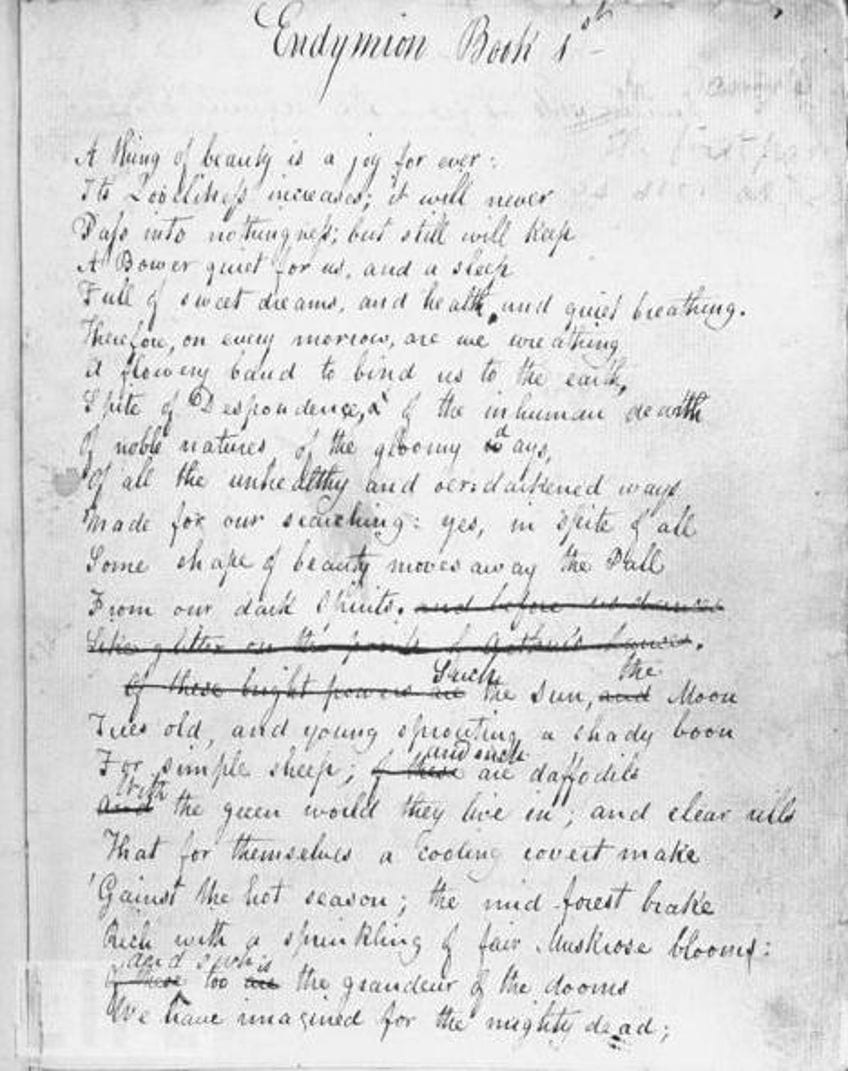
If a poet wants to make use of a poetic device, they will do so. For instance, extensive rhyme may sound lovely and musical, but if you wanted to write a poem that was about an intense trauma that you had experienced, would you necessarily write it with rhyme? Would you rather have it be free verse and far more “raw”, because rhyme often implies more of a refinement and dedication to poetic norms than free verse does?
Enjambment is similar. If you want to write poetry and present it in a far more traditional sense, you may not want to use enjambment. It makes a poem read like its prose. You’re reading it as if it’s a sentence rather than reading it “like a poem”. The whole idea of “reading it like a poem” already implies that we have preconceived notions about the supposedly correct and incorrect ways of engaging with and writing poetry, but those preconceived notions are just that.
They are not facts; they are simply reinforced opinions about how we think poetry should be rather than how it actually is.
However, this does not answer why enjambment is actually used. What does enjambment do in a poem? What are the effects that are caused by it? It is because of those effects that a poet may want to use it. We have already discussed how rhyme can often be more jovial and fun, and so it has a certain place, but not always. So, what is the version of that argument when it comes to enjambment? Let’s have a look.
The Effects Produced by Enjambment
There are a number of reasons that a poet may want to make use of enjambment in their poetry as it is a very useful tool to possess. It does not need to be used, but when it is used, it can be used to great effect. One of the standard uses of enjambment is to make something read like prose or ordinary speech. If you were to, for instance, include dialogue in a poem, it would make more sense for that dialogue to flow like ordinary speech rather than having breaks between each short line. Unless of course, you wanted your speech to also sound more traditionally “poetic”. Either using or not using enjambment is a choice in that sense.
When you make use of enjambment in a poem, it can often create a certain prose-like feeling. It can simply be read as continuous speech with no unnatural breaks in thought. This can mean that it becomes far more fluid in its presentation, or it can increase the complexity of the poem in general by allowing more complex and multifaceted ideas to be explored without the fundamental limitation of a pause after every line.

This prose-like presentation allows poems with enjambment to have a far faster pace to them. The complete abolition of those additional pauses can allow far more rhythm and flow between lines. It may also mean that a poem can be read aloud far faster and thereby leading to a more impactful punch because of the speedier pace at which it can be read.
On the flip side of all of this, enjambment is also a fantastic means of producing a text that is, in some way, disjointed and confused. It can allow for more abstract and difficult presentation. This may be desirable in all manner of poetic themes, such as producing a more horrifying or complex thought by using a stream-of-consciousness-style approach that can lead to thoughts being randomly dropped or trailed off without real resolution. There are many different effects that can be produced through the use of enjambment. It all depends on how a poet decides to make use of those instances of enjambment poems.
There is no correct or incorrect way of presenting this technique, only a number of different ways of doing it.
The Kind of Poetry That Uses Enjambment
Strictly speaking, enjambment as a poetic technique is something that can be used in any type of poetry. However, as many people tend to read poetry line-by-line, there is likely an association between more classical forms of poetry and a lack of enjambment. For instance, one does not typically associate Shakespeare and other writers in his vein with enjambment poems.

For this reason, there is probably more of an association between enjambment and later forms of poetry. Modernist poets often made extensive use of enjambment for a variety of purposes, and their poems would go on to have a powerful influence on contemporary poetry. Many contemporary poets often make use of free verse styles of poetry, and these work a lot better with enjambment than more classical forms of poetry.
Poems With Enjambment Examples
There are many poems with enjambment, and they may use this poetic technique for a variety of reasons, so let’s have a look at some enjambment examples. These poems all make use of enjambment to convey a different general feeling. One of them makes use of this technique to produce more of a flowing style while the other uses it to establish a disjointed and difficult read.
Neither of these enjambment examples are any more or less valid than the other; they are simply different.
Ozymandias (1818) by Percy Bysshe Shelley: Flowing Enjambment
| Date Published | 1818 |
| Type of Poem | Sonnet |
| Rhyme Scheme | ABABA CDCEDEFEF |
| Meter | Loose iambic pentameter |
| Topic | The dissolution of power |
This classic poem by Percy Bysshe Shelley is one of the most iconic poems of the Romantic era and a fantastic example of the way that a sonnet can be used. Many of the sonnets that we tend to see are those that do not use all that much enjambment, but this particular example makes exemplary use of it. First, what is this poem about? It is a story of sorts that entails a character speaking to the subject about a statue in Egypt. That statue is a depiction of Ramses II, also known as Ozymandias. This pharaoh was one of the most important in the history of ancient Egypt and has even been suggested as the basis of the biblical pharaoh from the Book of Exodus in the Bible. This man was a very important figure.
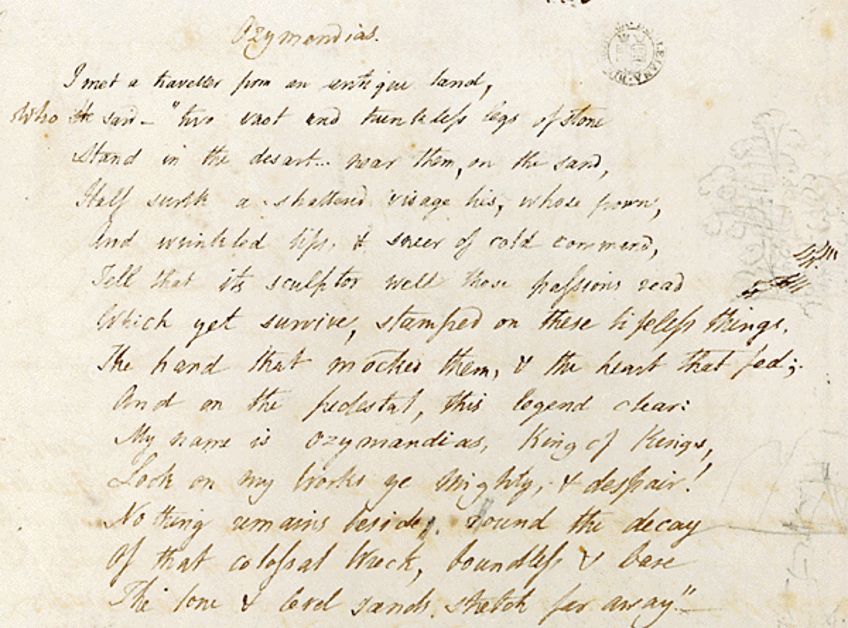
In the poem, his statue is described as a grand and illustrious thing. Or, at least, it was once a grand and illustrious thing. It has been thousands of years since his rule, and his once majestic statue has fallen into pieces and is no longer the powerful image that it once used to be. There is an inscription on the statue that proclaims Ozymandias as the “King of Kings” and that everyone who looks at what he has created should despair. However, there is nothing around the statue. Everything he created has withered away with time. The poem is a clear commentary on the kind of hubris inherent in power and how all of our accomplishments are washed away in the sands of time. It’s a pretty dark poem in that sense.
However, how does it use enjambment? Well, if you were to pick up this poem and read it as we are often taught to read poetry, on a line-by-line basis, then it would sound strange and stunted. Instead, from the second to the fourteenth and final line, the entire section is dialogue. It is a character speaking, and when someone speaks, they do not stop between lines. They only stop, momentarily for breath, after commas, and more fully for full stops. There are only actually two full stops and one exclamation point. There are few places for this particular poem to slow down. This means that when it is read aloud, you do not stop, and instead simply speak. When read, it sounds more like a speech than ordinary dialogue. It sounds larger-than-life and powerful, but it flows.
Each line flows into the next line, and this stops the poem from becoming stunted. This is what makes it one of the best examples of an “enjambment poem”.
It should also be noted that there is actually a superb reading of Ozymandias by Bryan Cranston, who played Walter White in Breaking Bad. This is a stunning reading of the poem that shows the way in which enjambment is used in this particular poem to convey a sense of weight and gravity to the collapse of empires and supposedly great men.
The Waste Land (1922) by T.S. Eliot: Disjointed Enjambment
| Date Published | 1922 |
| Type of Poem | Narrative poem |
| Rhyme Scheme | Blank verse |
| Meter | Variable |
| Topic | Modernist disillusionment |
The Waste Land by T.S. Eliot is one of those poems that can be somewhat blamed for the way society has come to view poetry in the modern era. It is considered to be one of the most important Modernist poems, but it is also a poem that is difficult to analyze. It was made intentionally difficult to analyze. In fact, in an attempt to help people understand the poem, Eliot even included a list of notes that follows on from the poem, but those notes are also so obscure and strangely worded that they have contributed to a dispute over various meanings within the poem.
However, that being said, when this poem is given a chance and analyzed, it is a fascinating thing that can lead to some very interesting discussions. The poem, as a whole, is about despair. It’s about Europe in the post-World War One era and the way in which many of the taken-for-granted aspects of life had led to something of a spiritual death of the continent and the people in it. The literal scars on the land caused by the war had become affixed to the people who lived in that land. The horrors of a war that still affected people. That war would also be the thing that led to the Second World War, and so the social decay that Eliot was discussing was very likely something that made sense to those who read it at the time.
As for the usage of enjambment in The Waste Land, it is used constantly and inconsistently throughout the poem. Some lines stand on their own, but others do not. There are some sections in which enjambment is used as a means of maintaining flow, such as the tarot card section in which one card after another is flipped, but this will then be juxtaposed against the very next stanza’s opening, which reads “Unreal city,/under the brown fog of a winter dawn,/a crowd flowed over London Bridge, so many,/I had not thought death had undone so many.” It reads as something strange and disjointed, something that feels like a stream-of-consciousness expression rather than something a human would actually say out loud.
There will sometimes be sentences in this poem that stretch on through the use of enjambment for many lines that could then be broken by other sentences or entire stanzas. It flips between one expression to the next, seemingly at random (especially upon first reading the poem), and this all contributes to the general difficulty of analyzing this poem at all. The enjambment sometimes allows the poem to flow more naturally and sometimes leads to it being immensely confusing, and this fragmentary and disjointed presentation contributes to this enjambment poem as one of the most effective of its kind.
And so, we come to the end of this attempt to answer the question: “What is enjambment in poetry?”. We have examined enjambment in general, what it is, how it works, and we have also provided a number of examples of poems with enjambment to demonstrate how this poetic technique can be used. Hopefully, this has provided an adequate answer as to what this technique is and the ways in which it can be used. Are there any enjambment poems out there that you particularly enjoy?
Frequently Asked Questions
What Is Enjambment in Poetry?
Enjambment is, very basically, a poetic technique that involves the use of lines that do not complete an idea or thought. Instead, the idea that was expressed in one line transfers into the next line and so on. This can mean that whole sentences can be produced in poetic form with breaks between the lines for whatever purpose may be intended by the poet.
What Is an Enjambment?
Enjambment does not exist outside of poetry, and so its existence within poetry is all that matters. It refers to the way in which a thought can be carried over more than one line in a poem. It has no other meanings.
Does a Poem Need to Use Enjambment?
A poem does not need to make use of enjambment. This technique can be used to improve the flow of a poem and to often make it read as if it were continuous writing, such as speech. It can also make a poem sound a lot more like prose when being read aloud, and this may be desirable. However, many poems do not make use of enjambment. In this case, there is generally a slight pause after each line.
What Are Some of the Most Famous Poems That Use Enjambment?
Enjambment is used in many different poems, but some famous poems include Ozymandias (1818) by Percy Bysshe Shelley, and The Waste Land (1922) by T.S. Eliot. However, there are many poems that make use of this technique, and this method can especially be found in more contemporary and free verse styles of poetry.
Who Are Some of the Most Famous Poets Who Use Enjambment?
Many writers have made use of enjambment, but it was more from the Modernist and subsequent eras that enjambment became far more prevalent. For this reason, many Modernist writers are likely some of the most notable writers of enjambment poems. For instance, writers like T.S. Eliot, Ezra Pound, and William Carlos Williams were some of the most prominent and prolific users of this poetic technique.
Justin van Huyssteen is a freelance writer, novelist, and academic originally from Cape Town, South Africa. At present, he has a bachelor’s degree in English and literary theory and an honor’s degree in literary theory. He is currently working towards his master’s degree in literary theory with a focus on animal studies, critical theory, and semiotics within literature. As a novelist and freelancer, he often writes under the pen name L.C. Lupus.
Justin’s preferred literary movements include modern and postmodern literature with literary fiction and genre fiction like sci-fi, post-apocalyptic, and horror being of particular interest. His academia extends to his interest in prose and narratology. He enjoys analyzing a variety of mediums through a literary lens, such as graphic novels, film, and video games.
Justin is working for artincontext.org as an author and content writer since 2022. He is responsible for all blog posts about architecture, literature and poetry.
Learn more about Justin van Huyssteen and the Art in Context Team.
Cite this Article
Justin, van Huyssteen, “What Is Enjambment in Poetry? – Creating Flow in Your Writing.” Art in Context. September 18, 2023. URL: https://artincontext.org/what-is-enjambment-in-poetry/
van Huyssteen, J. (2023, 18 September). What Is Enjambment in Poetry? – Creating Flow in Your Writing. Art in Context. https://artincontext.org/what-is-enjambment-in-poetry/
van Huyssteen, Justin. “What Is Enjambment in Poetry? – Creating Flow in Your Writing.” Art in Context, September 18, 2023. https://artincontext.org/what-is-enjambment-in-poetry/.


